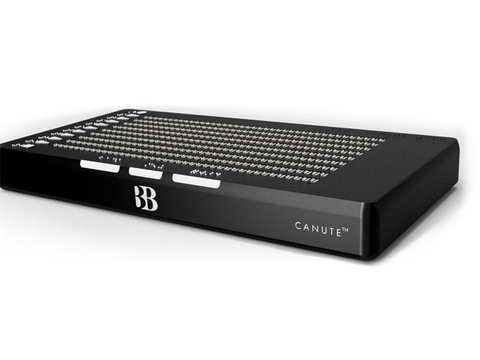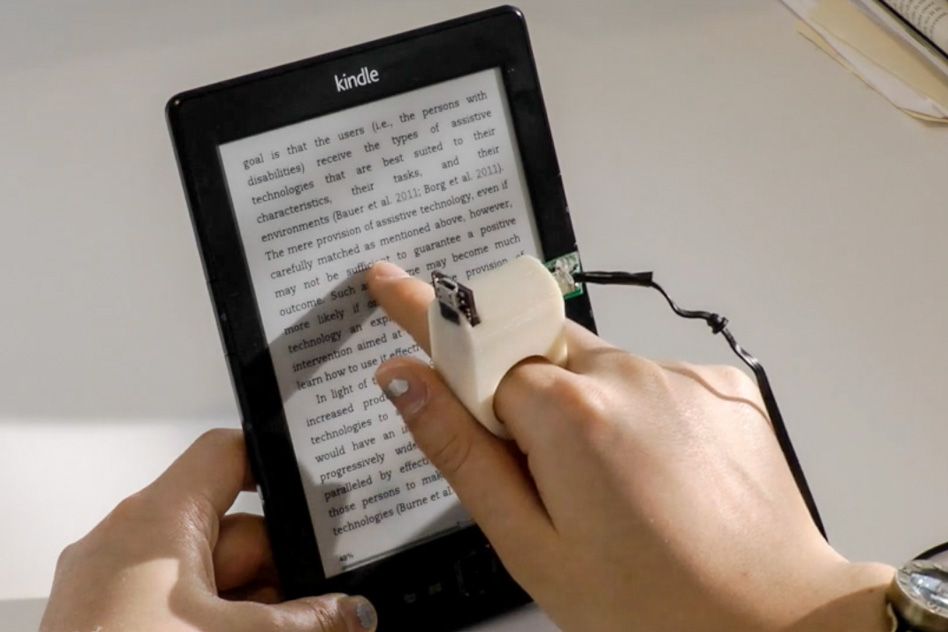OCR Devices for the Blind: Changing Print to Speech in Real-Time
OCR Devices for the Blind: Changing Print to Speech in Real-Time
Blog Article
Discover Innovative Devices Developed for the Aesthetically Impaired
The growth of ingenious devices for the visually impaired represents a substantial development in access and freedom. Technologies such as smart glasses with AI abilities and mobile applications designed to give auditory descriptions are improving day-to-day experiences for customers. Additionally, wearable devices that utilize haptic feedback boost ecological awareness, while modern Braille developments provide brand-new means to engage with message. As these devices remain to develop, their effect on the lives of those with aesthetic problems increases important questions concerning the future of inclusivity and freedom in various aspects of life. What exists ahead in this technical landscape?
Smart Glasses for Navigation
%20(1).webp)
Smart glasses designed for navigation are transforming the way aesthetically damaged people engage with their environment. These sophisticated tools use a mix of camera innovation, expert system, and acoustic responses to supply real-time info concerning surroundings. By utilizing barrier detection systems, clever glasses can alert users to possible threats, making it possible for more secure movement in both familiar and strange setups.
The combination of GPS innovation even more boosts navigation capabilities, allowing users to get acoustic directions as they move. This hands-free technique not only fosters self-reliance but likewise encourages visually damaged people to navigate metropolitan landscapes with raised confidence. Additionally, lots of smart glasses are outfitted with attributes that determine landmarks and road indicators, offering contextual information that enhances the individual experience.
Additionally, the development of these tools is continually advancing, with companies working to improve the precision of item recognition and expand the array of navigational functions. As wise glasses come to be extra inexpensive and available, they hold the prospective to substantially transform daily life for visually damaged customers. Inevitably, these innovative devices stand for a vital action toward inclusivity, offering enhanced wheelchair and a better feeling of autonomy for individuals navigating the world around them.

Mobile Apps for Daily Living
Exactly how can mobile applications enhance the every day lives of aesthetically damaged people? Mobile apps are transforming the means aesthetically impaired individuals navigate their settings, take care of day-to-day jobs, and gain access to details. These applications give necessary support via different functionalities, promoting self-reliance and improving quality of life.
Numerous cutting-edge mobile apps are created especially for day-to-day living. Apps like Be My Eyes connect aesthetically damaged customers with sighted volunteers via video clip telephone calls, permitting them to get real-time help with tasks such as checking out tags or browsing strange rooms. Seeing AI, established by Microsoft, makes use of artificial knowledge to explain surroundings, reviewed message, and recognize objects, efficiently transforming a smartphone right into a powerful tool for daily assistance.
Additionally, navigating apps tailored for the visually damaged, such as Aira and BlindSquare, supply audio-based directions and ecological details, allowing individuals to traverse their surroundings safely and confidently. Past navigation and prompt support, mobile apps also sustain company and job administration, with functions that help customers set tips, create to-do checklists, and track consultations. In summary, mobile applications function as important sources, empowering aesthetically impaired people to lead more independent and fulfilling lives.
Wearable Technologies for Aid
Empowerment with innovation is increasingly obvious in the realm of wearable tools designed to help aesthetically damaged people. These innovative tools integrate flawlessly into day-to-day live, boosting navigating and offering important comments to customers. For example, wise glasses outfitted with video cameras can read and acknowledge faces text out loud, permitting customers to interact even more confidently in expert and social setups.
An additional remarkable development is the usage of haptic responses systems in wearable tools. These systems use vibrations or other tactile signals to communicate details about the customer's environment, such as challenges or modifications in surface, improving mobility and security. Wearable innovations likewise consist of wristbands that connect to smartphones, informing customers to alerts through refined vibrations, hence improving connection without reliance on aesthetic cues.
As these modern technologies remain to progress, they are not just boosting freedom for visually impaired individuals yet likewise fostering a higher sense of addition in society. By bridging the void between obstacles faced in day-to-day living and the capacity for autonomy, wearable technologies function as pivotal tools in the mission for equality and empowerment for those with visual disabilities.
Audio Description Devices
Sound summary devices play an important role in boosting access for aesthetically get more damaged individuals, supplying them with the capacity to involve with aesthetic media. Mobility aids for visually impaired users. These tools supply narrated summaries of crucial aesthetic aspects in movies, tv shows, and live efficiencies, making sure that customers can totally comprehend the context and feelings communicated via visuals
Sound summary can be incorporated right into numerous platforms, consisting of streaming solutions, cinema screenings, and live theater. Several prominent streaming solutions now include audio summary as an ease of access attribute, permitting visitors to choose it quickly. Along with conventional media, specialized apps additionally exist, giving audio summaries for art exhibitions, galleries, and other cultural occasions.
The effectiveness of audio description depends upon the ability of the storytellers, that need to convey aesthetic details succinctly without interfering with the initial audio. Advancements in this field are also leading the method for more tailored experiences, where customers can adjust the degree of detail and pacing according to their preferences.
Braille Innovations and Instruments
Braille tools and developments have actually substantially changed the means aesthetically damaged people interact with message and info. Modern innovations have caused the advancement of functional devices that improve proficiency and self-reliance among users. Notably, Braille present technologies have developed, allowing for vibrant reading experiences. These tools transform digital text into Braille, enabling users to access a huge range of details on mobile phones, tablets, and computer systems.
In addition, mobile Braille notetakers integrate traditional Braille input with modern performances, helping with note-taking, organizing, and paper editing on the move. Screen readers for the blind. These small tools frequently feature text-to-speech abilities, connecting the gap between Braille and acoustic information
Additionally, ingenious Braille printers have emerged, permitting individuals Home Page to create Braille tags, files, and instructional products efficiently. This ease of access fosters higher participation in professional and academic environments, ultimately advertising inclusivity.
Furthermore, study right into wise Braille innovations continues to broaden. Gadgets that incorporate fabricated intelligence are being checked out to supply real-time navigation assistance and contextual details, improving the individual experience in varied setups. Overall, these technologies show a dedication to encouraging visually impaired individuals via modern technology, ensuring they can quickly gain access to and involve with the world around them.

Conclusion
The advancement of innovative devices for the aesthetically damaged significantly boosts independence and quality of life. These innovations not only foster better incorporation Related Site yet also advertise autonomy in day-to-day tasks, ultimately contributing to an extra available and fair culture for aesthetically damaged people.
As clever glasses come to be a lot more affordable and accessible, they hold the prospective to dramatically change everyday life for visually damaged users. Mobile apps are changing the means visually damaged customers navigate their atmospheres, manage day-to-day jobs, and access info. Applications like Be My Eyes attach aesthetically impaired customers with sighted volunteers using video calls, allowing them to obtain real-time help with jobs such as reading tags or browsing strange rooms.Additionally, navigation apps tailored for the visually impaired, such as Aira and BlindSquare, use audio-based instructions and ecological info, enabling users to traverse their surroundings safely and confidently.The improvement of cutting-edge devices for the aesthetically damaged significantly enhances independence and high quality of life.
Report this page